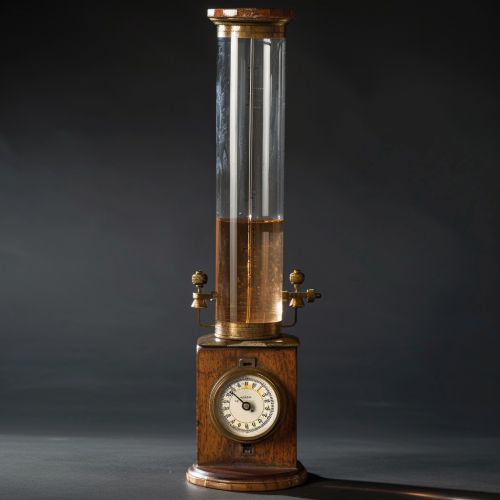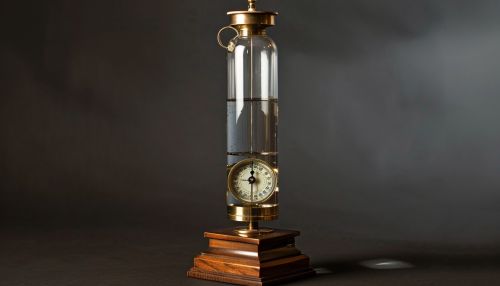Barometer
Introduction
A Barometer is an instrument used to measure atmospheric pressure. It provides a measure of the weight of the column of air that extends from the instrument to the top of the atmosphere. There are two main types of barometers: mercury and aneroid.


History
The concept of measuring atmospheric pressure was first explored by Galileo Galilei. However, the first practical barometer was invented by Evangelista Torricelli in 1643. Torricelli, a student of Galileo, discovered that air has weight and that it could be measured. This discovery led to the development of the mercury barometer.
Mercury Barometers
A mercury barometer consists of a glass tube, closed at one end, filled with mercury, and inverted into a container of mercury. The height of the mercury column is a direct measurement of the atmospheric pressure. The height of the mercury column changes as the atmospheric pressure changes, providing a measure of atmospheric pressure.
Construction
The construction of a mercury barometer requires careful handling of mercury, a toxic liquid metal. The glass tube must be filled with mercury and then inverted into a container of mercury without introducing any air bubbles. The top of the mercury column forms a vacuum, known as a Torricellian vacuum.
Operation
The operation of a mercury barometer is based on the principle of equilibrium. The weight of the mercury column is balanced by the weight of the atmosphere pushing down on the reservoir. When the atmospheric pressure increases, it pushes more mercury up into the column; when the pressure decreases, the height of the mercury column falls.
Limitations
Mercury barometers have some limitations. They are large and fragile, and they require a large quantity of mercury, which is toxic. They also require calibration to account for changes in the gravitational pull at different locations and temperatures.
Aneroid Barometers
An aneroid barometer uses a small, flexible metal box called an aneroid cell. This box is sealed at the time of manufacture and the air inside is partially evacuated, creating a partial vacuum. As the atmospheric pressure changes, the box expands or contracts. This movement is magnified by a system of levers and gears to move a pointer on a dial.
Construction
The construction of an aneroid barometer requires precision engineering. The aneroid cell must be made from a material that is elastic but will not deform permanently. The cell is connected to a set of mechanical levers that amplify its movements.
Operation
The operation of an aneroid barometer is based on the principle of mechanical advantage. The small movements of the aneroid cell are amplified by the levers and gears to move a pointer on a dial. The dial is calibrated to indicate the atmospheric pressure.
Limitations
Aneroid barometers also have some limitations. They are less accurate than mercury barometers and they require regular calibration to maintain their accuracy. They are also sensitive to temperature changes and must be adjusted to account for this.
Applications
Barometers have a wide range of applications. They are used in meteorology to measure atmospheric pressure and predict weather changes. They are also used in aviation to provide altitude information to pilots. In addition, they are used in various scientific research and industrial applications.
